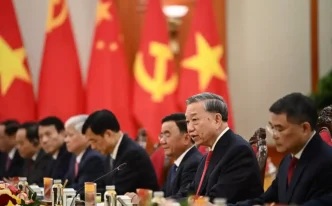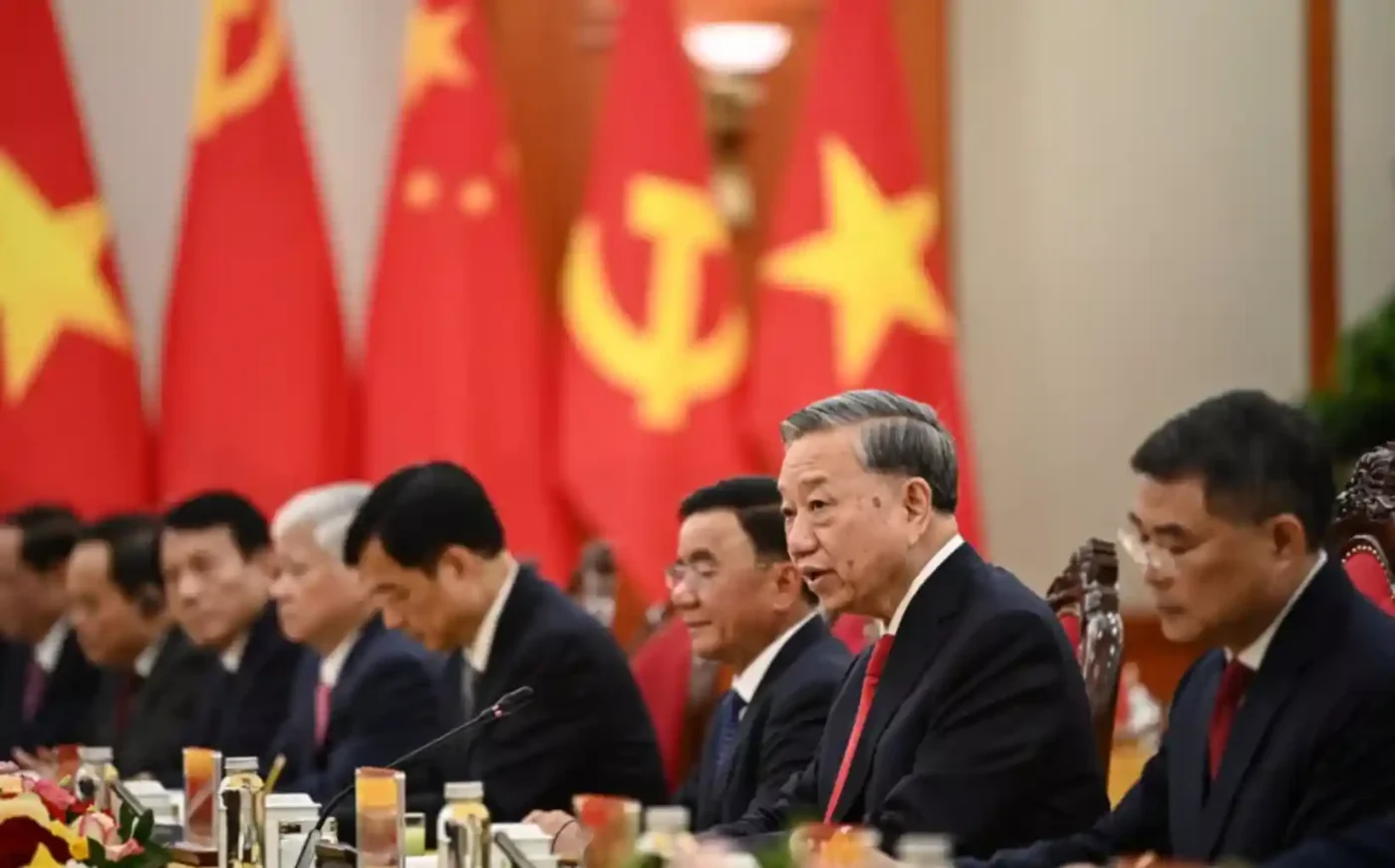Vietnam has initiated a historic process of constitutional amendments aimed at overhauling its administrative structure, reducing the number of provinces, abolishing district-level governments, and redefining the role of the Vietnam Fatherland Front (VFF), a key political coalition. Unveiled during the National Assembly’s (NA) 9th session on May 5, 2025, these reforms promise to reshape the country’s governance model, potentially streamlining public services and enhancing efficiency in a rapidly modernizing nation. As discussions unfold in Hanoi, the implications of these changes are drawing attention both domestically and internationally.
A Bold Vision for Administrative Reform
The proposed amendments target Vietnam’s long-standing three-tier administrative system—comprising provincial, district, and communal levels—by introducing sweeping changes to eight of the Constitution’s 120 articles. At the heart of the reform is a plan to reduce the number of provinces and centrally governed cities from 63 to 34 through mergers. This move, officials argue, will consolidate resources, eliminate redundant administrative functions, and boost economic scale across regions.
Perhaps the most transformative proposal is the abolition of district-level governments entirely. Under the new framework, provinces would directly oversee communes, villages, wards, and townships, creating a leaner two-tier system. NA Vice Chairman Nguyễn Khắc Định highlighted the inefficiencies of the current model during the session’s opening, stating, “The three-tier government model has become increasingly cumbersome and duplicative, generating excessive administrative procedures and failing to leverage digital technologies to improve public service delivery”.
This restructuring aims to address chronic issues of bureaucratic overlap and slow decision-making, which have often hampered Vietnam’s ability to respond swiftly to local needs. By removing an entire layer of governance, the government hopes to cut costs and improve direct communication between provincial authorities and grassroots communities. However, the transition could pose significant logistical challenges, particularly in rural areas where district offices have long served as critical intermediaries.
Redefining the Vietnam Fatherland Front
Another focal point of the amendments is the restructuring of the Vietnam Fatherland Front (VFF), a constitutional body described in Article 9 as the “political base of the people’s power”. The VFF, a coalition of political and social organizations, plays a pivotal role in promoting national unity, supervising government activities, and channeling public feedback. Yet, its overlapping functions with member organizations and inconsistent engagement with local communities have prompted calls for reform.
NA Vice Chairman Định noted, “VFF’s functions often overlap with those of its member organizations, and in certain localities, the Front has struggled to maintain close ties with grassroots communities and promptly reflect public sentiment”. The proposed changes, while not aiming to abolish the VFF, seek to refine its constitutional definition and align its operations with the new two-tier administrative model. Speculation suggests that revisions to Article 9 could clarify the Front’s supervisory role, while amendments to Article 84 might centralize legislative proposal rights within the VFF’s Central Committee, stripping such powers from individual member groups like the Trade Union or Farmers’ Union.
The VFF’s evolution is significant, as it remains a cornerstone of Vietnam’s political system under the leadership of the Communist Party of Vietnam (CPV). Any shift in its mandate could influence how public grievances are articulated and addressed, potentially strengthening centralized control while aiming to enhance responsiveness at the local level.
Why Constitutional Change is Necessary
Vietnam’s 2013 Constitution explicitly outlines the three-tier administrative structure in Article 110, designating provinces, districts, and communes as official units. Eliminating the district level, therefore, directly contradicts the current legal framework, necessitating formal amendments. Similarly, the VFF’s entrenched status under Article 9 means that any redefinition of its role or structure must be constitutionally enshrined.
In contrast, the merger of provinces does not require constitutional revision, as the Constitution does not specify their number or names. Such changes can be enacted through standard legislative resolutions by the NA. However, the broader administrative overhaul, coupled with the VFF’s restructuring, underscores the need for a comprehensive constitutional update—an endeavor that could impact approximately 19,000 legal documents at both central and local levels, including key laws like the Law on the Organisation of Local Governments.
These reforms are not merely bureaucratic; they reflect Vietnam’s broader ambitions to modernize governance in line with its economic and digital transformation goals. As the country positions itself as a regional manufacturing hub and a leader in Southeast Asia, a more agile administrative system could enhance its competitiveness. Yet, the scale of legal revisions required raises questions about implementation timelines and potential disruptions to public services during the transition.
The Amendment Process: A Rigorous Path Ahead
The process to amend Vietnam’s Constitution is meticulous, governed by Article 120 of the 2013 Constitution and the Law on Organisation of the National Assembly. It begins with a proposal from key entities such as the President, the NA Standing Committee, the Government, or at least one-third of NA deputies. The NA must then approve the proposal with a two-thirds majority before drafting can commence.
Following approval, a Constitutional Drafting Committee is formed to develop the amendments. On May 5, the NA Standing Committee appointed a 15-member committee led by NA Chairman Trần Thanh Mẫn, including representatives from various central agencies. The draft will undergo public consultation from May 6 to June 5, 2025, allowing citizens, experts, and institutions to provide input. After incorporating feedback, the committee will finalize the draft for a final NA vote, where another two-thirds majority is required for passage. While a referendum is permitted under the Constitution, it remains optional and has not been confirmed for this process.
The timeline is ambitious, with the amendments mandated to be finalized by June 30 and set to take effect on July 1, 2025. This compressed schedule reflects the urgency of the reforms but also heightens the risk of oversight or inadequate public engagement. Past constitutional revisions in Vietnam—occurring in 1946, 1959, 1980, 1992, and 2013—have often marked pivotal shifts, from socialist transformations to market-oriented reforms. If successful, the 2025 amendments could herald a new era of governance efficiency, though their long-term impact remains to be seen.
Historical Context and Public Sentiment
Vietnam’s history of constitutional change offers insight into the potential significance of the current reforms. The 1980 Constitution entrenched socialist principles during a period of post-war reconstruction, while the 1992 revision paved the way for economic liberalization under Đổi Mới policies. The most recent 2013 Constitution reaffirmed the CPV’s leadership while expanding provisions for human rights and governance structures. Each amendment has mirrored the country’s evolving priorities, and the 2025 proposals appear to prioritize administrative pragmatism amid rapid urbanization and technological advancement.
Public sentiment, as gauged through initial reactions on platforms like X and local media, appears mixed. Some citizens welcome the promise of reduced bureaucracy, with one user posting, “Less red tape could mean faster services for rural areas like mine”. Others express concern over the loss of district-level representation, fearing diminished local accountability. These varied perspectives underscore the importance of the upcoming public consultation phase, which could shape the final draft and address grassroots apprehensions.
Challenges and Implications
Implementing these reforms will not be without hurdles. The abolition of district governments, while aimed at efficiency, could strain provincial authorities tasked with directly managing thousands of communes. Rural regions, where infrastructure and digital access remain limited, may face delays in service delivery during the transition. Additionally, the estimated revision of 19,000 legal documents poses a monumental administrative burden, potentially leading to legal inconsistencies if not carefully managed.
The VFF’s restructuring also carries political weight. Centralizing its legislative proposal powers could streamline policy input but risks alienating smaller member organizations, potentially weakening the Front’s role as a broad-based coalition. If not handled with transparency, these changes could fuel perceptions of top-down control, even as the government seeks to enhance responsiveness.
Economically, provincial mergers may yield long-term benefits by fostering larger, more integrated regional economies. However, short-term costs—such as reallocating resources or redefining local budgets—could strain public finances. While specific figures remain undisclosed, the government will likely need to invest significantly in training and digital infrastructure to support the two-tier model.
Looking Ahead
As Vietnam navigates this ambitious reform agenda, the coming months will test the government’s ability to balance efficiency with inclusivity. The public consultation period offers a critical opportunity to refine the amendments, ensuring they reflect diverse perspectives across urban and rural divides. Meanwhile, the international community watches closely, as these changes could influence Vietnam’s governance model and its role within ASEAN.
With the amendments slated to take effect on July 1, 2025, questions linger about their ultimate impact on Vietnam’s political and administrative landscape. Will a leaner system deliver the promised efficiencies, or will it expose new governance gaps? Only time will tell, but for now, Hanoi stands at a crossroads, poised to redefine how it governs a nation of nearly 100 million.















